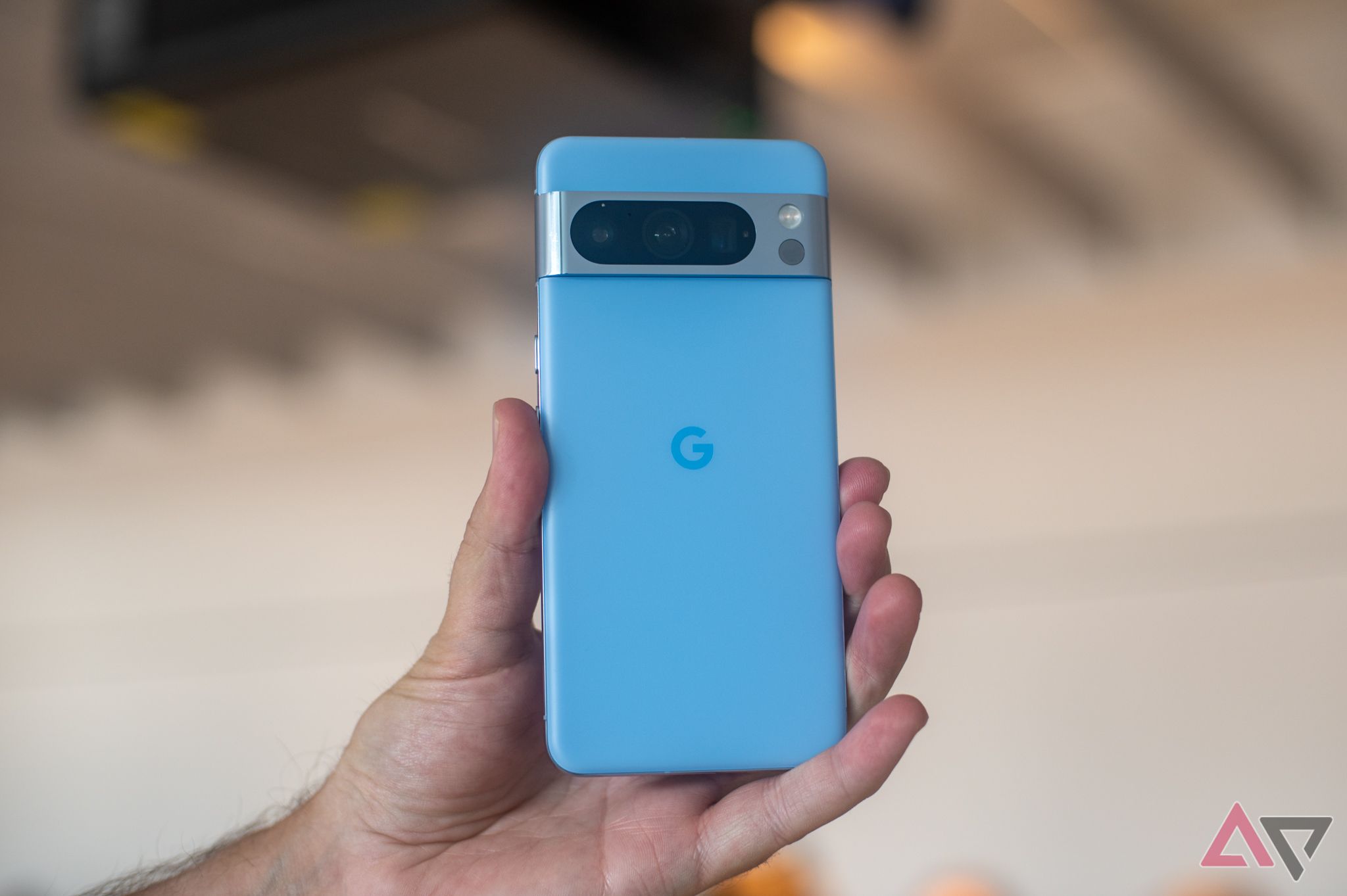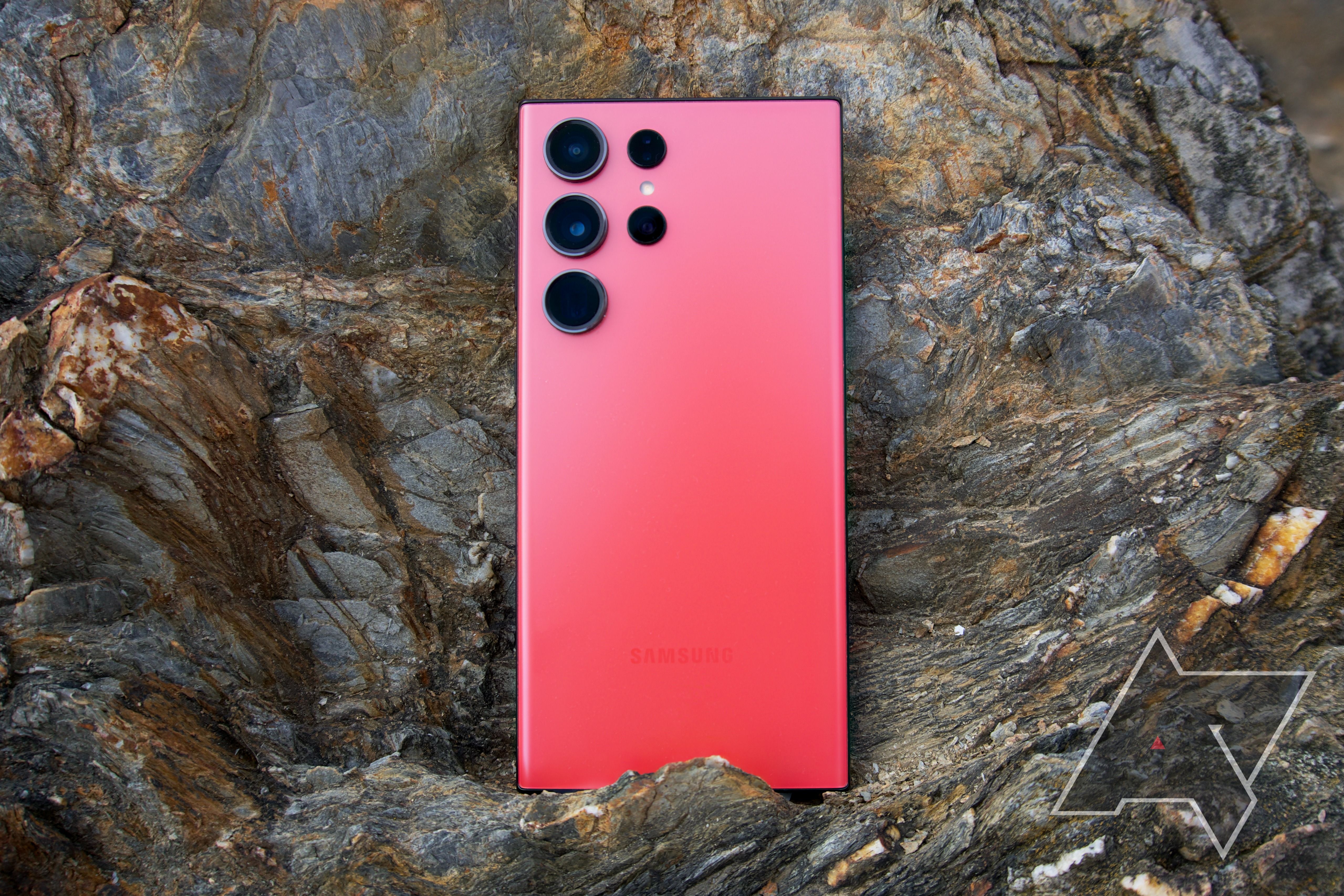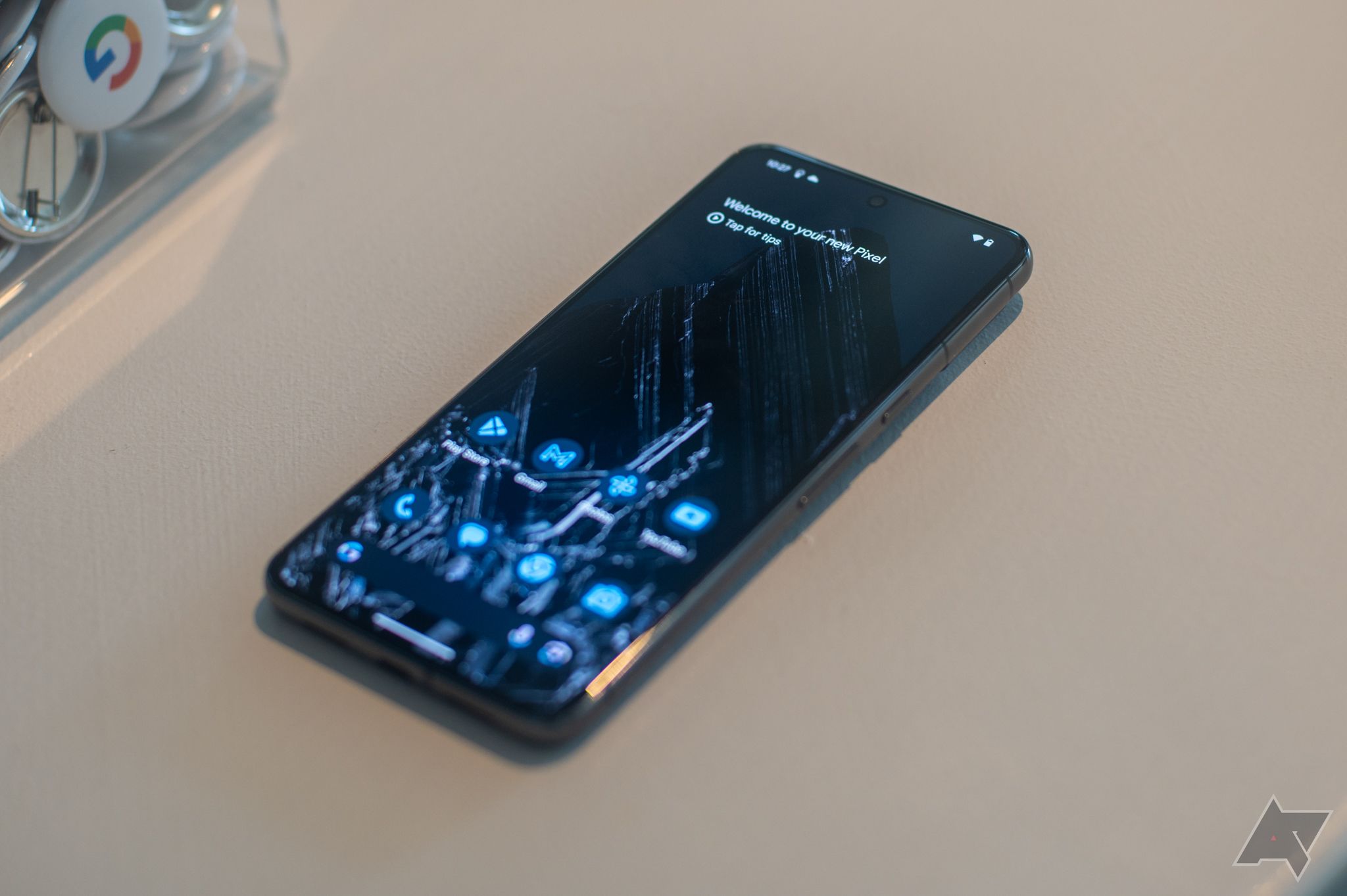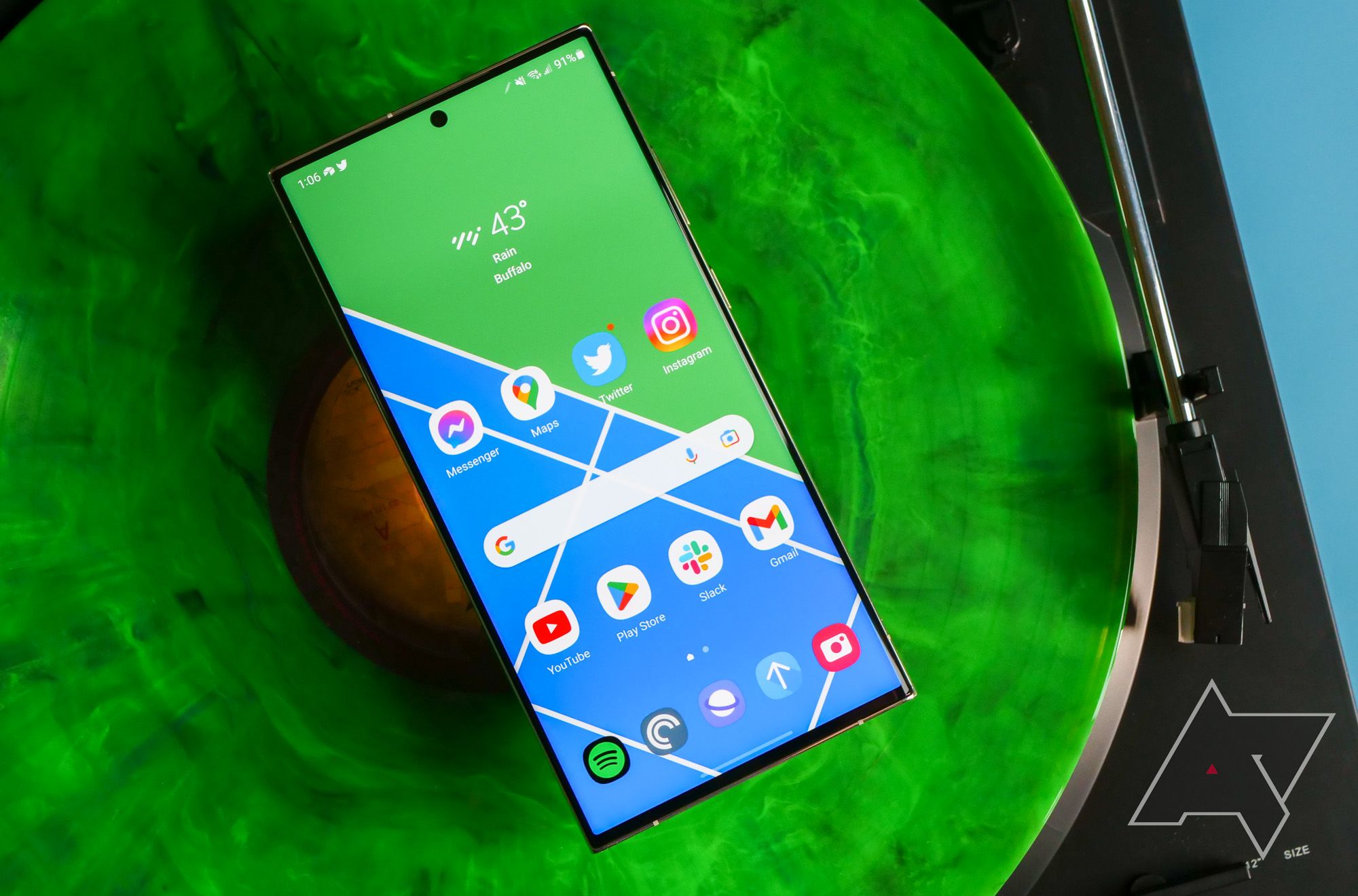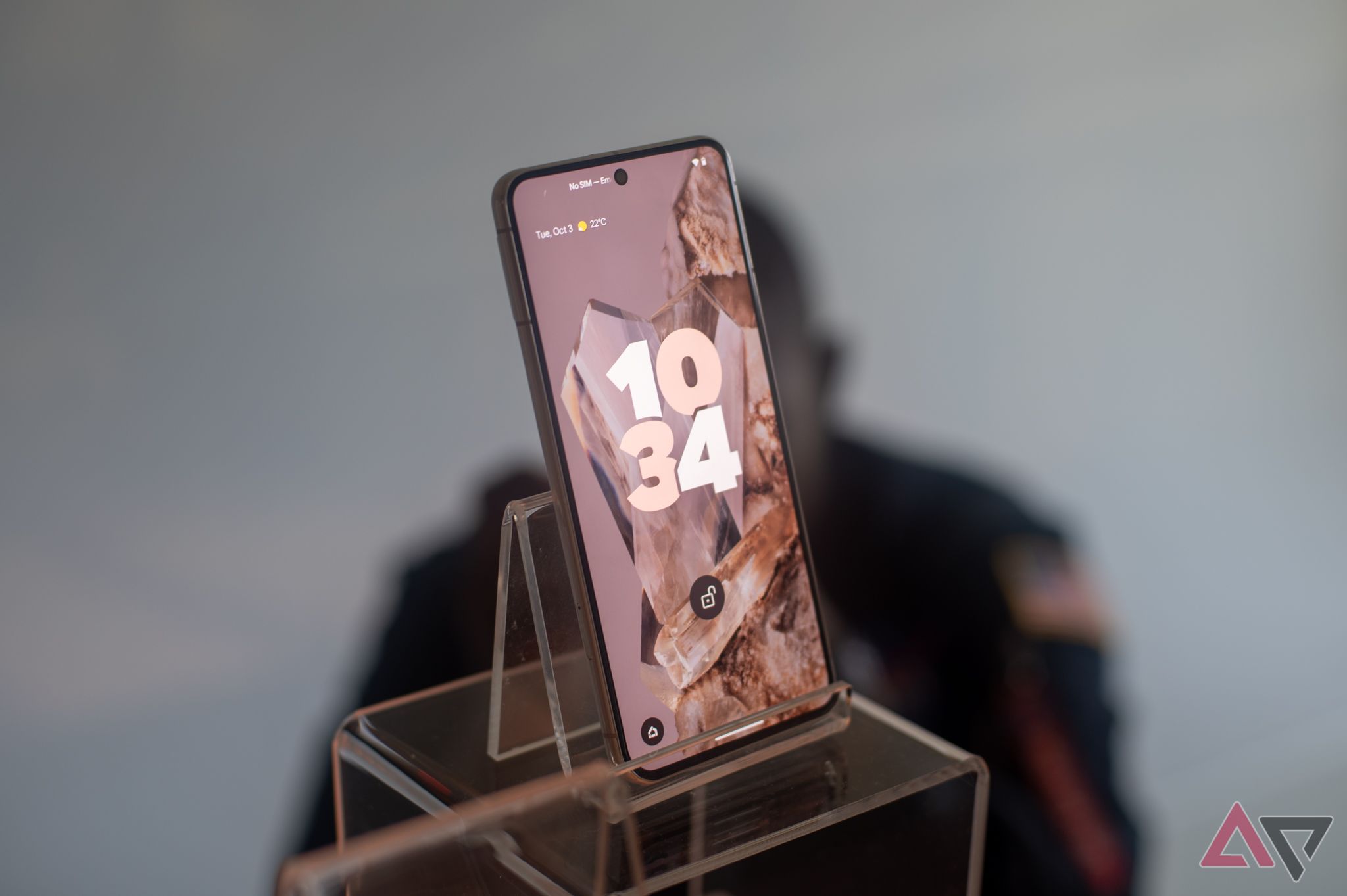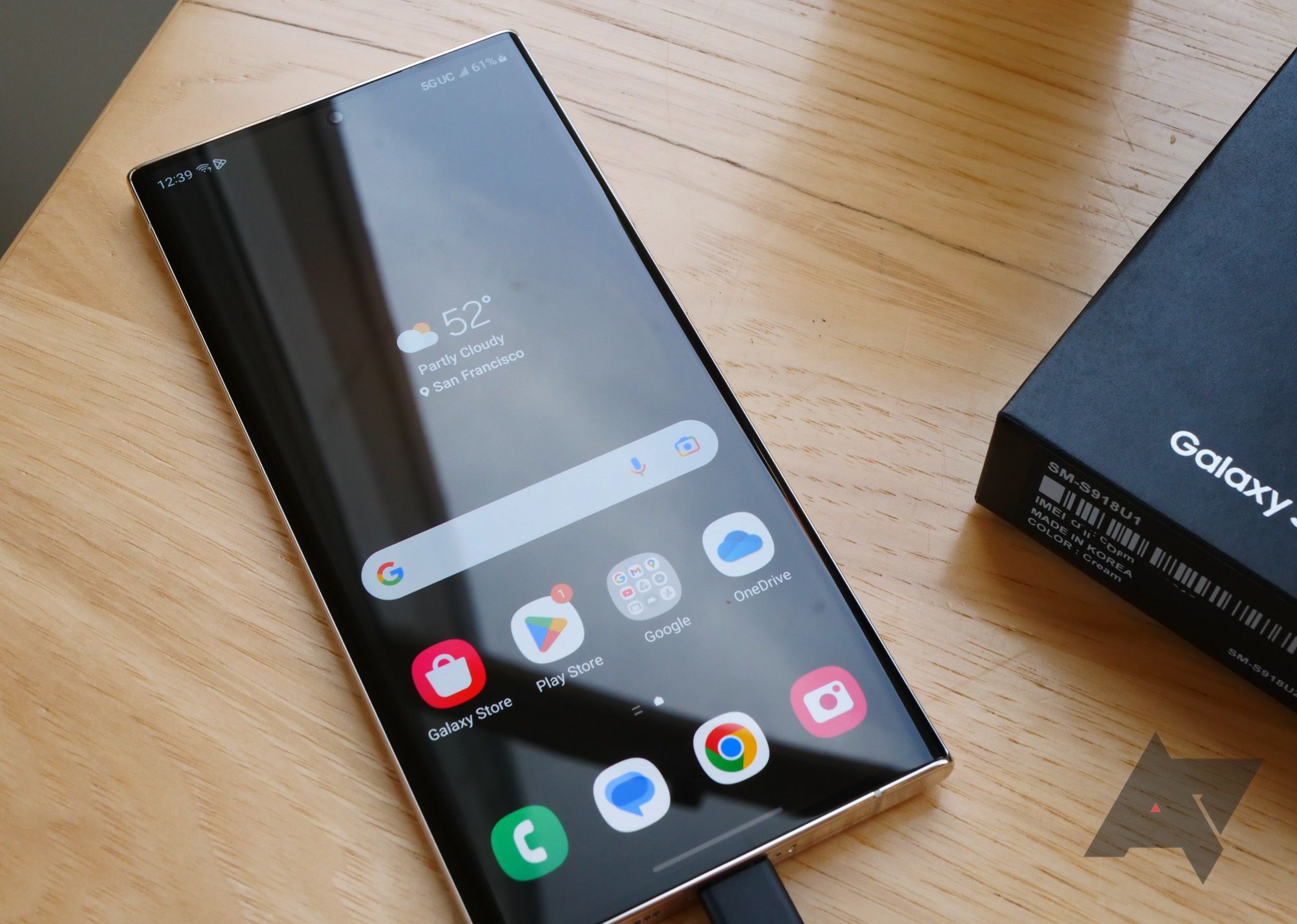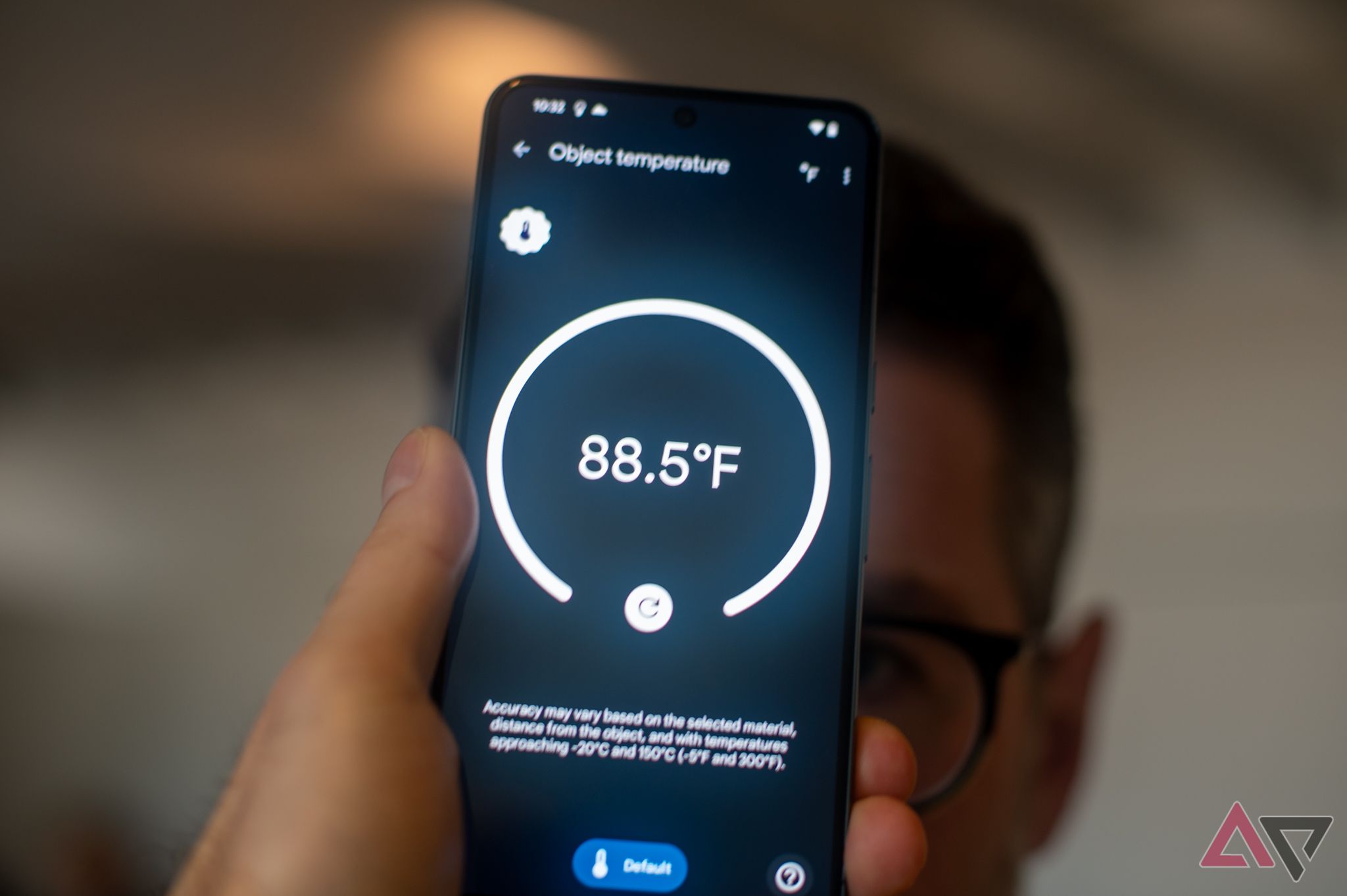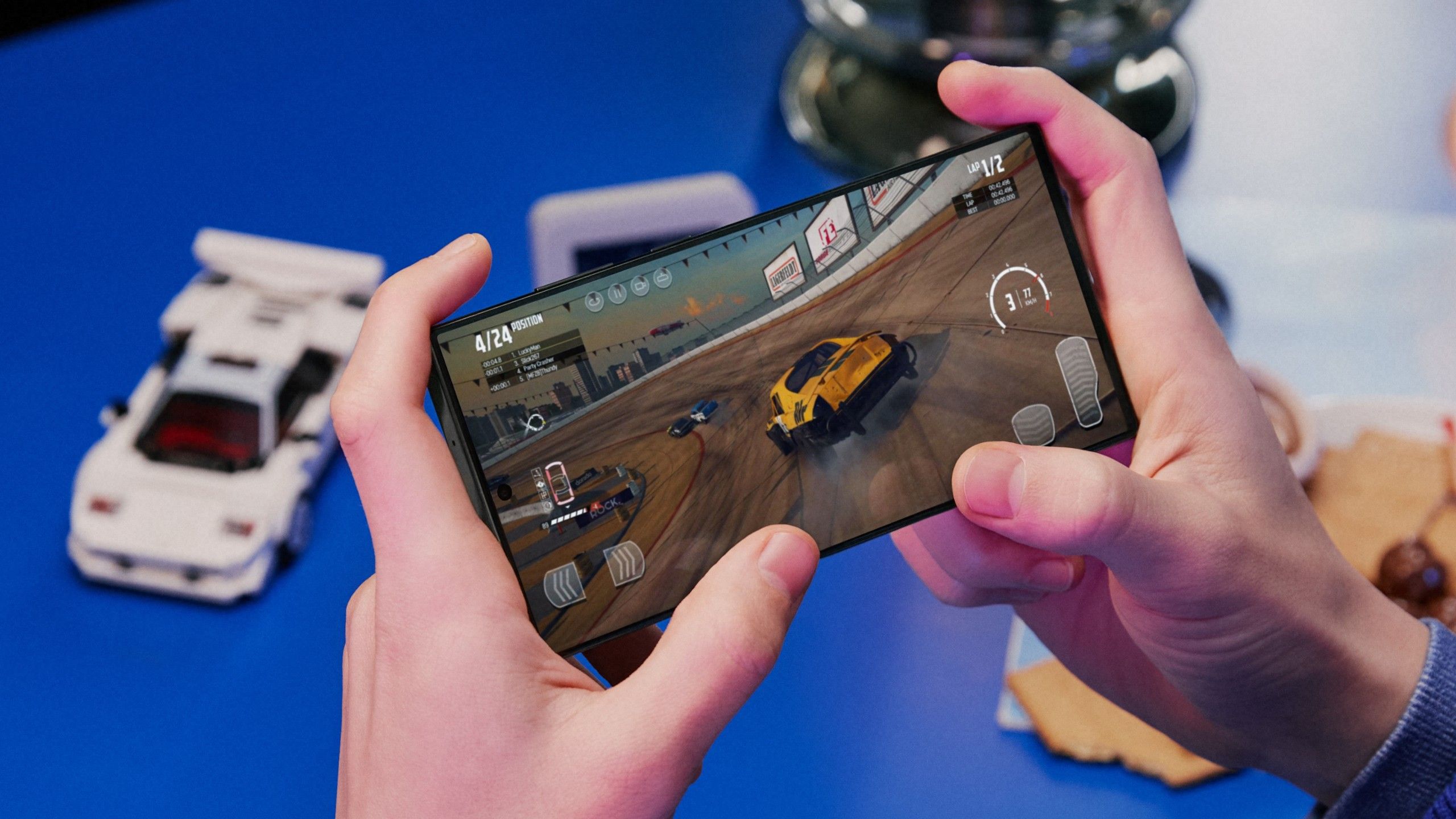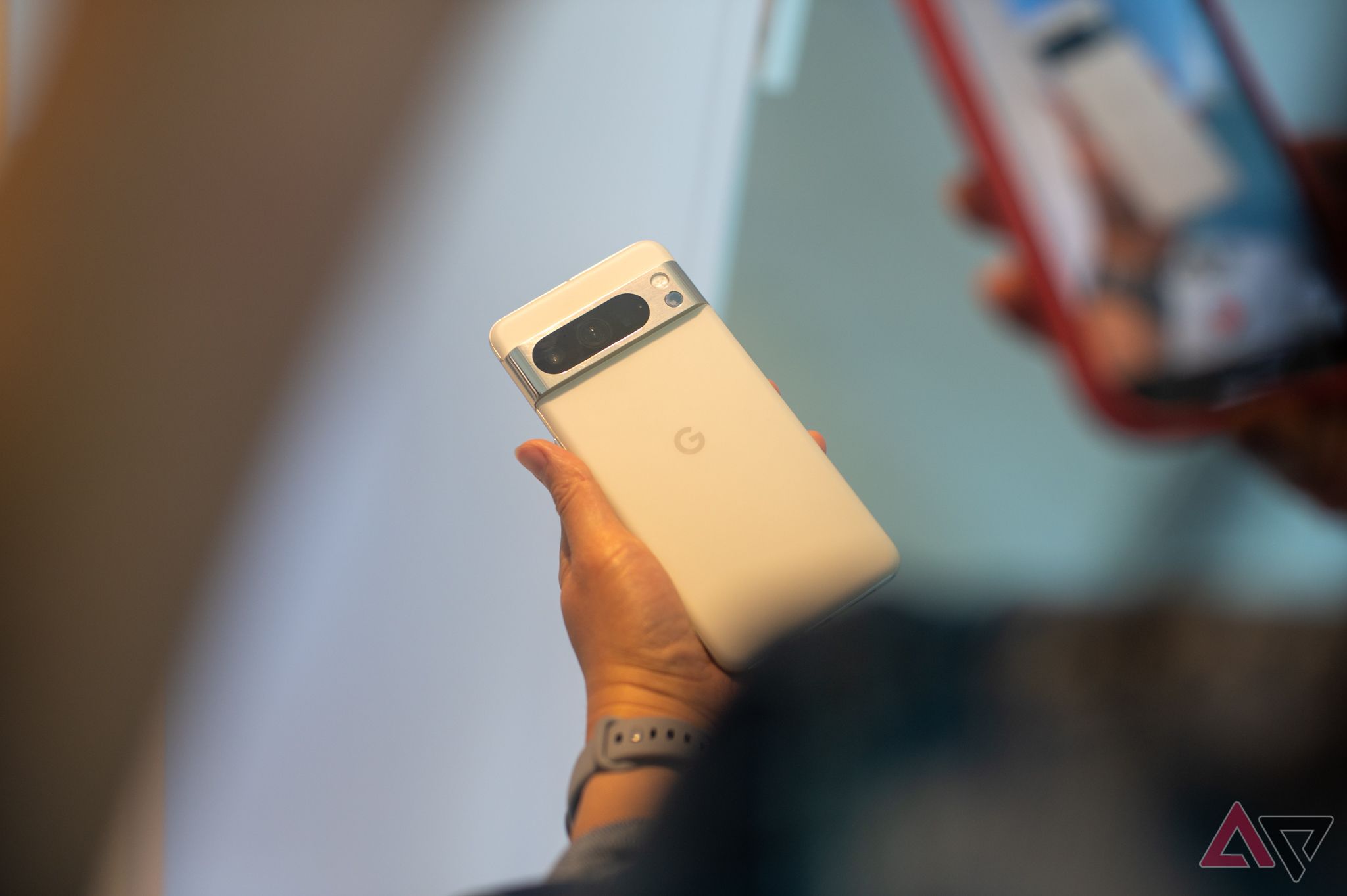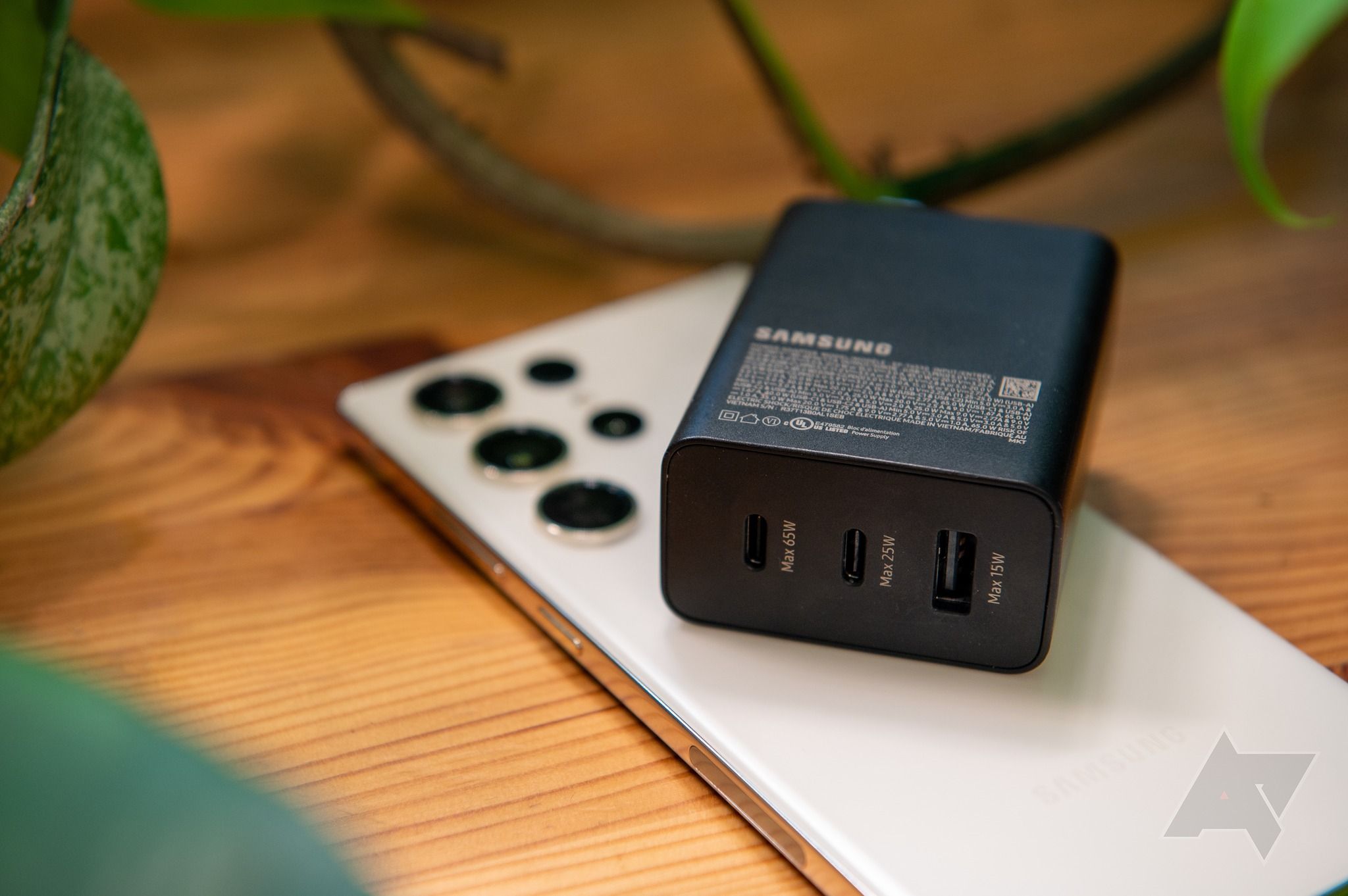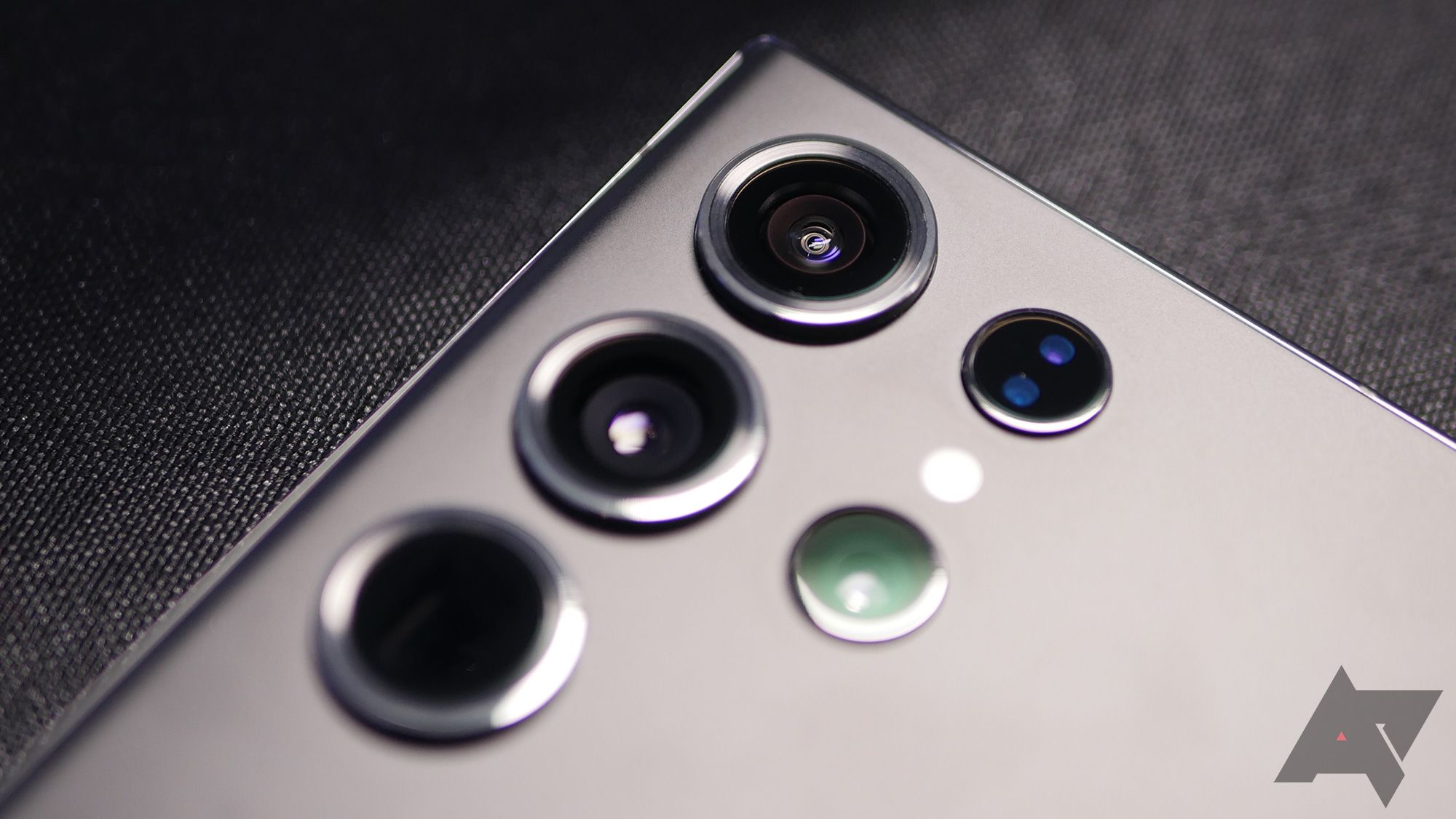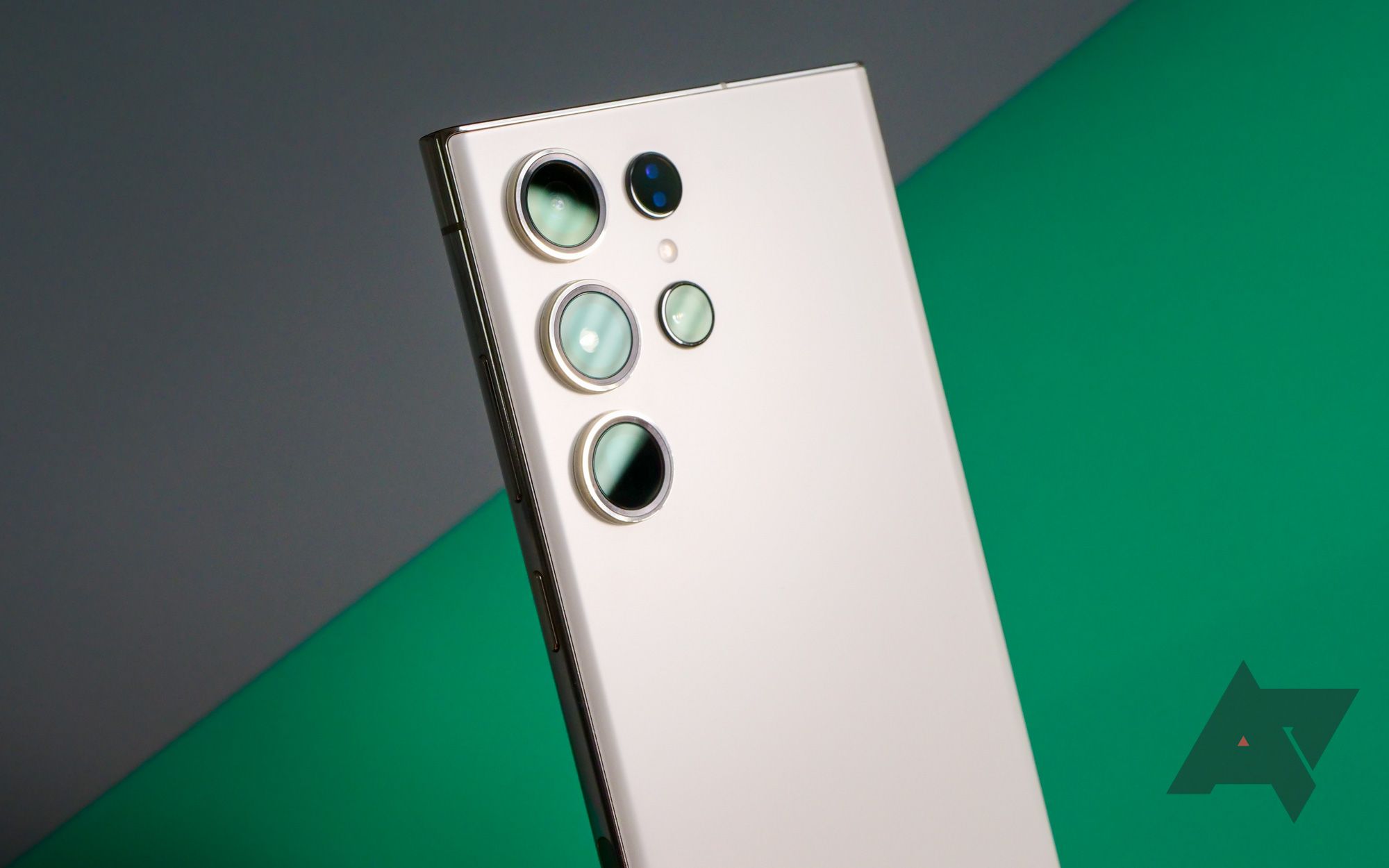-
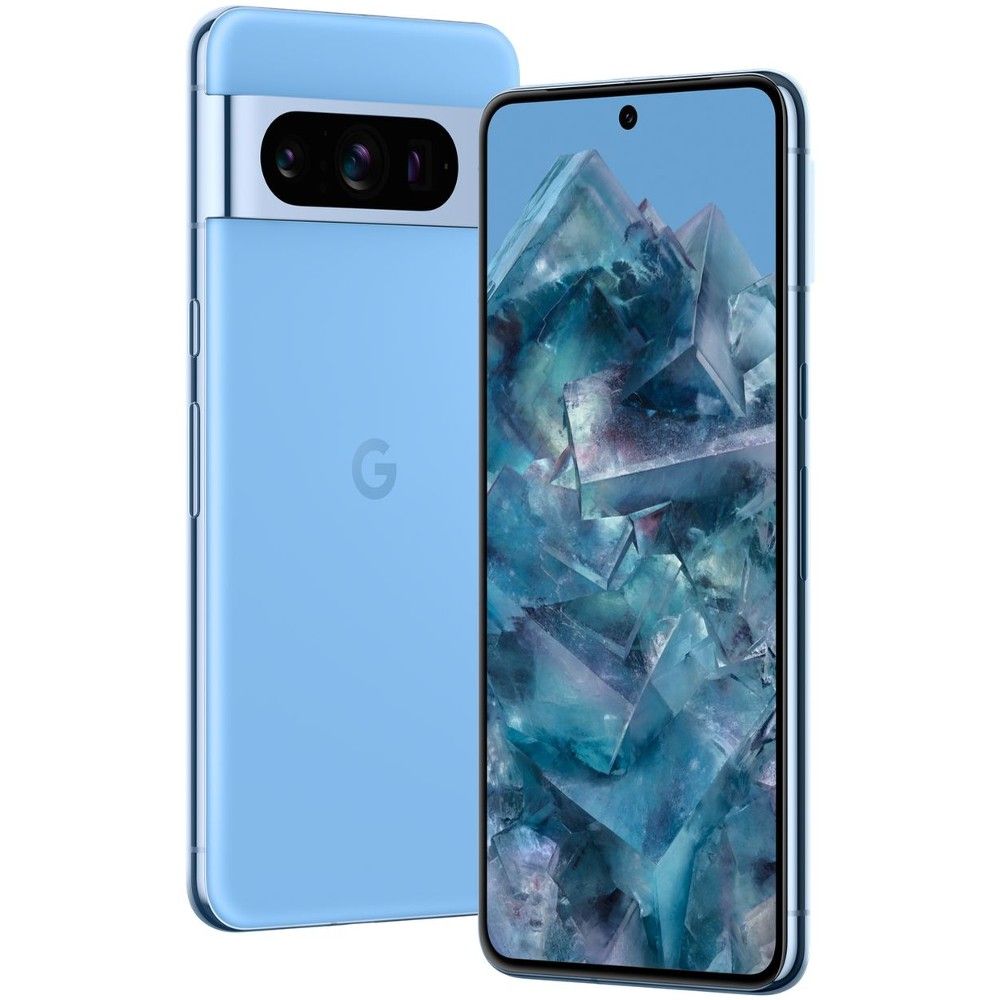
Even more AI
Google Pixel 8 Pro
The Google Pixel 8 Pro is the company’s latest flagship, boasting a new Tensor G3 chip, a brighter screen, and a new camera array capable of capturing even more light. As usual, the real power lies in Google’s Tensor chip, which offers even more photo enhancement and image editing features.
Pros- Improved, bright display
- Excellent cameras
- 6 more years of software support
Cons- Slow charging
- Not optimized for gaming
-
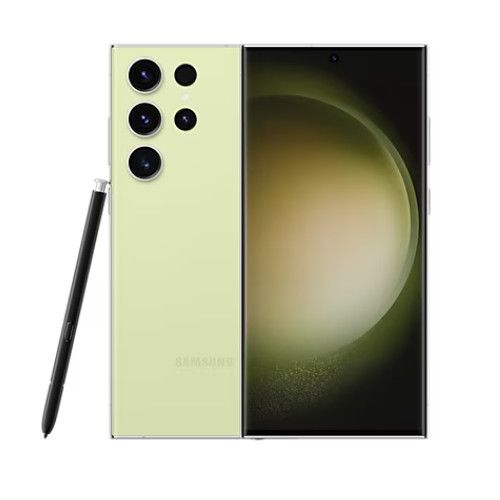
Powerhouse
Samsung Galaxy S23 Ultra
$1060 $1200 Save $140
If you’re looking for the best of the best out of Android in 2023, the Samsung Galaxy S23 Ultra is it. It’s the only one in the S23 lineup to feature the company’s flagship 200MP camera sensor, the only one with a 5,000mAh battery, and the only one to push the storage envelope up to 1TB. The Snapdragon 8 Gen 2 should run fast and easily. And who can forget about all the note-taking features and the added convenience the S Pen brings?
Pros- Excellent battery life
- Gorgeous display
- Premium build
Cons- Expensive (even in 2024)
- Relatively slow charging
The Google Pixel 8 Pro is the company’s best smartphone in years, featuring a new, bright display, solid performance, and seven years of software support. Like its predecessor, the Pixel 8 Pro is not a benchmark beast, often lagging behind flagship Snapdragon chipsets. But as Google is so fond of reminding us, the Pixel experience isn’t about raw power, as Gemini Nano is now available, offering the magic of AI on our handsets. It’s not the most useful just yet, but it does help level the playing field against the Galaxy S23 Ultra.
Meanwhile, despite being over a year old, the Samsung Galaxy S23 Ultra still packs quite a punch, as the Snapdragon 8 Gen 2 rips through daily tasks and AAA games in 2024. Price cuts make it a competitive option for those who enjoy a more wallet-friendly flagship experience. Even still, the Pixel 8 Pro is reduced in price, making it an interesting conversation on which phone should earn your dollars.
Price, specs & availability
Even though the Pixel 8 Pro launched with a starting price tag of $999, frequent sales have brought it down to $749. Google offers the Pixel 8 Pro with storage configurations starting at 128GB and extending to 1TB. It’s available now in Obsidian, Porcelain, and Bay colors.
Meanwhile, the Samsung Galaxy S23 Ultra is available for a significant discount off its original $1,200 MSRP. Amazon renewed devices will cost around $750, while new examples are closer to $1,000. It’s a lot of phone for the money, and its deep discount makes it an attractive package. It’s available generally in Phantom Black, Green, Lavender, and Cream, plus Lime, Graphite, Sky Blue, and Red exclusively from Samsung.
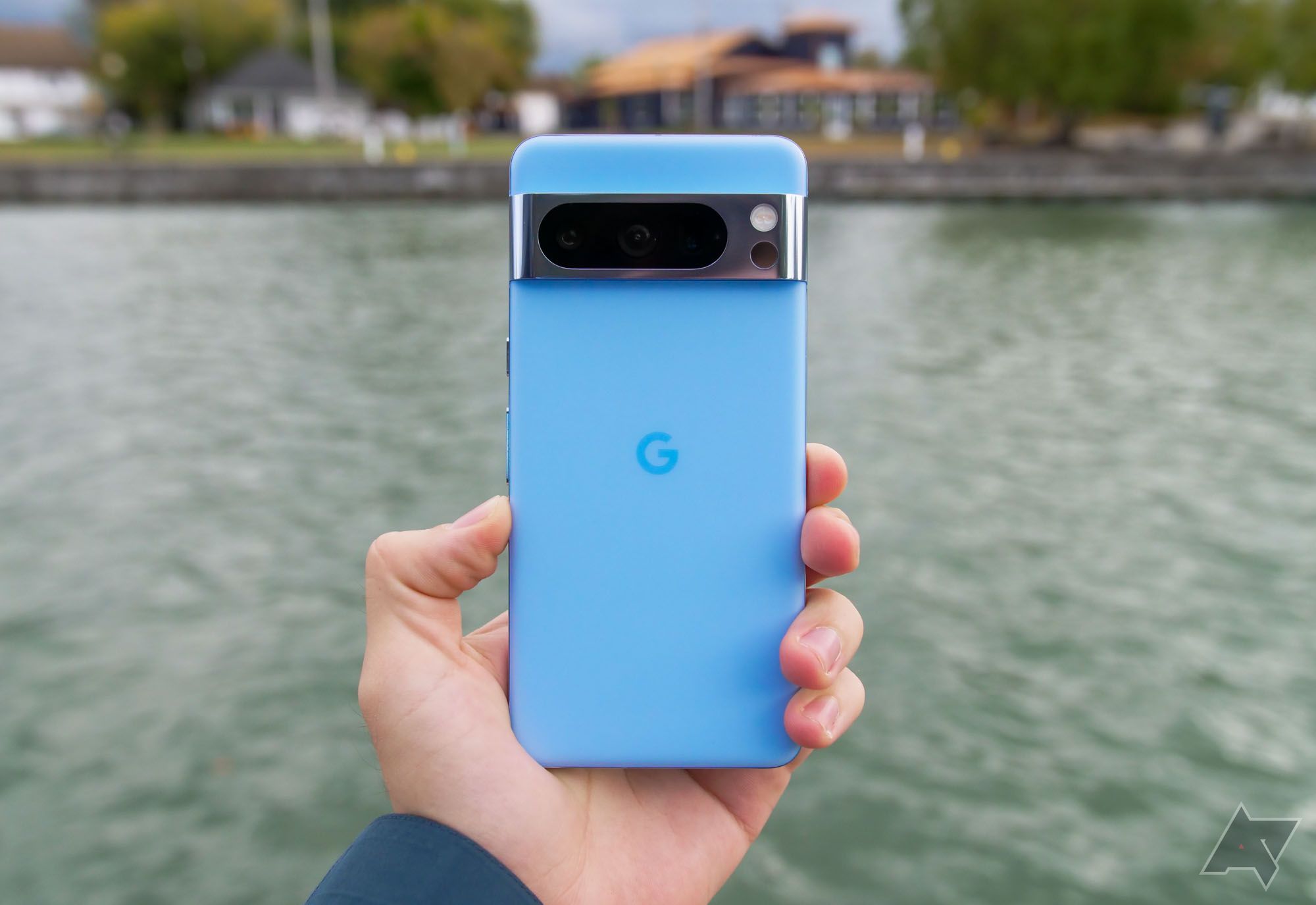
Read our review
Google Pixel 8 Pro review: Living up to its name
If you want to see the future of Google, the Pixel 8 Pro is the phone to buy
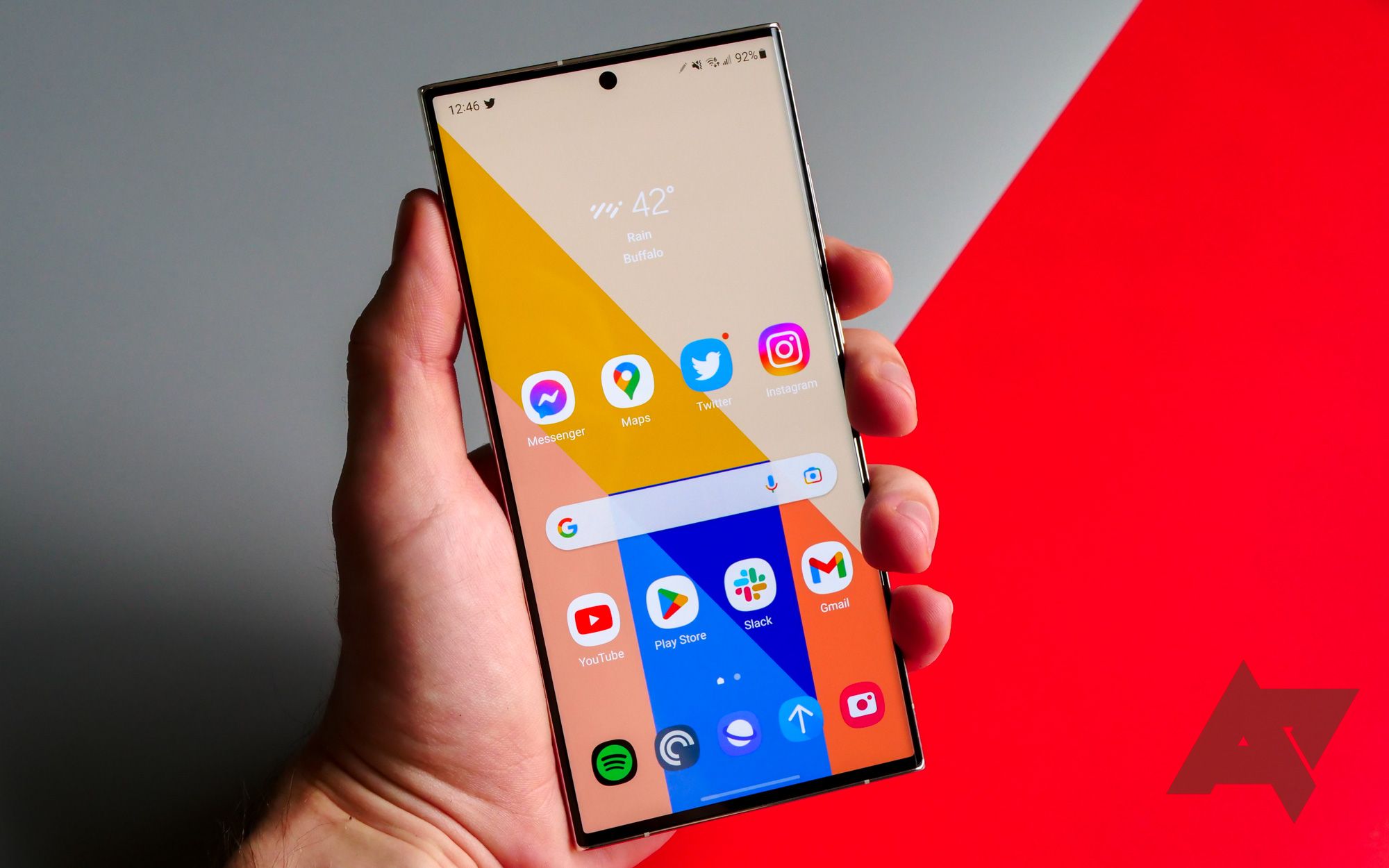
Read our review
Samsung Galaxy S23 Ultra review: More phone than you need
And that’s exactly what makes it so exceptional
Design
Elegant and unique
It seems that Google found its design groove with the Pixel 6 a couple of years ago, adopting a glass back adorned with what’s not become its signature camera bar. Unsurprisingly, the Pixel 8 Pro sticks to that motif to the point where you’ll probably have a hard time telling it apart at a glance from the Pixel 7 Pro.
Nevertheless, there are some differences. Firstly, the color lineup switches out Snow and Hazel for Porcelain and Bay, the latter of which is a rather fetching midrange blue that may not be obvious from its name. However, even though the Obsidian black remains in the lineup, the glossy glass has been replaced with a matte finish that should be far less of a fingerprint magnet for those who choose to use their Pixel uncased.
Beyond those differences, the Pixel 8 Pro retains its quintessential Google design, with rounded corners and symmetrical bezels around the front screen, and the polished aluminum frame on the outside. The front and rear glass get an upgrade to Corning’s Gorilla Glass Victus 2 for improved durability and scratch resistance.
This puts the Pixel 8 Pro more on par with Samsung’s Galaxy S23 Ultra, which also introduced the Victus 2 glass on both sides. Both phones also feature an IP68 rating for dust and water resistance.
However, the Galaxy S23 Ultra has a more dominating presence than the Pixel 8 Pro, with a 6.8-inch screen and sharper squared-off corners that feel like they make a bolder design statement. Samsung has also ditched the camera bump in this year’s models, opting to let the five individual lenses protrude on their own for a slightly more refined and elegant look. It’s also available in a wider assortment of colors; even if the S23 Ultra’s selection seems a bit less inspired than the richer finishes of the S22 Ultra, you’re more likely to find something that fits your style.
Display
Bold and bright
Google has upped its game this year by giving the Pixel 8 Pro the brightest display found on any mainstream smartphone. While the Galaxy S23 Ultra got a welcome upgrade with a peak 1,750-nit display, Google has trounced that by pushing the Pixel 8 Pro to an astonishing 2,400 nits of outdoor brightness and 1,600 nits of HDR brightness.
The brightness is the biggest improvement Google has made this year in its new “Super Actua” display, a term which Google says is intended to emphasize its “ultra real clarity” and color accuracy. However, it’s still an LTPO OLED screen with a variable 1-120Hz refresh rate and 2,992 x 1,344-pixel resolution that works out to a density of 489 pixels-per-inch (ppi).
Of course, Samsung has long been the king of OLED smartphone displays, and the S23 Ultra has a “Dynamic AMOLED 2X” screen that remains the best on the market in nearly every other way. The slightly higher 3,088 x 1,440 resolution fills the larger 6.8-inch screen and still manages to provide a slightly higher 500 ppi quality. While the Pixel 8 Pro screen supports HDR, Samsung’s S23 Ultra is HDR 10+ certified.
Both the Pixel 8 Pro and Galaxy S23 Ultra use under-display fingerprint scanners, but Samsung edges out Google (and most others) with its more sophisticated ultrasonic scanner, which is faster and more reliable than the more traditional optical scanner that Google is still using in the Pixel 8 Pro. However, that may be less of an issue for Pixel fans this time around, as Google is expanding its Face Unlock to work everywhere the fingerprint sensor can, including third-party apps and other sign-in prompts.
Software
Years of updates
The Pixel 8 Pro runs Android 14 out of the box, but an upgrade to Android 15 is expected in the Fall. Gemini Nano is also available, giving Pixel owners added AI enhancements, like Summarize for Recorder. Meanwhile, the S23 Ultra launched with Android 13 but has since been upgraded to Android 14 and One UI 6.1, bringing Samsung’s own Galaxy AI to the device. Both implementations of AI are still in the early stages, but we’re hopeful the Pixel 8 Pro and S23 Ultra will get to enjoy the best features these companies have to offer for years to come.
However, Google is breaking new ground this year by promising a staggering seven years of full Android OS updates and Pixel Feature Drops. That’s unprecedented by any other smartphone maker, including Apple, which was once the one to beat for longevity. Since the Pixel 8 Pro ships with Android 14, that means you’ll someday be able to update it to Android 21.
To be fair, Samsung hasn’t been a slouch in this area, promising four years of OS updates and five years of security updates. However, that’s become table stakes for flagship Android phones, and will only take the Galaxy S23 Ultra to Android 17. Samsung previously had the Pixel 7 Pro beat for updates, which was ironic considering that Android is Google’s baby; clearly Google decided that was embarrassing and realized it needed to up the ante.
This year’s Pixel lineup offers up another surprise with a new sensor in the Pixel 8 Pro that can measure the temperature of any objects you place against the phone. While that’s a bit of a novelty feature for now, once it gets past the necessary regulatory approvals, you’ll be able to measure your body temperature and upload it to your Fitbit.
Performance
Advanced AI vs. raw power
Two years ago, Google began developing its own custom silicon for the Pixel 6 lineup, and while the journey hasn’t been an entirely smooth one, the company is clearly hoping that the third time will be the charm. With the Pixel 8 Pro, Google is unveiling the Tensor G3, a significantly updated version with a new ARM V9 CPU cluster and some significant GPU upgrades.
Thankfully, it’s Google’s best effort to date, as the Tensor G3 provides snappy performance. Scrolling is smooth, and we never noticed any hiccups in testing. It’s still not a gaming beast, but light to moderate gaming was easily handled. Most importantly, Google seems to have solved the heating issues that plagued previous Tensors, as the G3 powering the Pixel 8 Pro doesn’t feel like a space heater in your hand.
Google claims the machine learning model on the Pixel 8 Pro is ten times more complex than the Pixel 6, allowing it to power even more leading-edge computational photography features, enhance things like Clear Calling and Pixel’s Call Screen, and deliver new experiences like Audio Magic Eraser that can clean up distracting background sounds from your video recordings.
Source: Samsung
On the flip side, the Qualcomm Snapdragon 8 Gen 2 chip in the Galaxy S23 Ultra is an absolute powerhouse in its off-the-shelf form, and Samsung has souped it up with a custom version it’s calling the “Snapdragon 8 Gen 2 Mobile Platform for Galaxy.” It’s a chip that delivers an incredible amount of raw performance without sacrificing power efficiency yet still packs in strong image signal processing to produce great photos and videos.
No matter how much Google has improved its Tensor G3, it simply can’t match the raw power of the Snapdragon 8 Gen 2, much less surpassing it, and it’s telling that Google isn’t making any performance claims. Its play for the Tensor is in AI. The Pixel 8 Pro is for those who want the most advanced photo processing and other machine-learning features like spam call screening, while the Galaxy S23 Ultra is for those who want to feel confident that even the most demanding games will run smoothly at maximum settings without heating up the phone or killing the battery.
Battery and charging
It comes down to power efficiency
Google Pixel 8 Pro and Samsung’s Galaxy S23 Ultra both pack in similarly-sized cells in the 5,000mAh range. And while previous Pixel models fell short on battery life, the Pixel 8 Pro more than holds its own, offering at least equal screen-on time as the S23 Ultra. It’s an impressive turnaround for the company, thanks in part to the more efficient Tensor G3.
Meanwhile, the Galaxy S23 Ultra can easily get through a day and a half of moderately heavy use on a single charge. Sure, that will go down if you’re pushing it by playing some of the most demanding games, but most folks shouldn’t have trouble with typical mixed use, and nine hours of screen-on time isn’t unusual.
Unfortunately, Google didn’t increase charging speeds to match the better battery life. The Pixel 8 Pro still only supports wired charging speeds in the 25-30W range, with Google promising a 50% top-up in 30 minutes, but it can take up to two hours to hit a full tank. By comparison, Samsung’s Galaxy S23 Ultra offers 45W charging with the proper adapter, which brings the total charging time down to about an hour under ideal conditions.
Both phones are a bit more closely matched for wireless charging, with the Pixel 8 Pro drawing 12W from most Qi chargers while the Galaxy S23 Ultra can pull in 15W. That’s not likely going to result in a practical difference for most folks, especially since you’re far better off pulling out a cable if you’re in a hurry; however, it’s also worth noting that the Pixel 8 Pro can get up to 23W wireless charging speeds if you pair it with Google’s Pixel Stand.
Cameras
Does software beat hardware?
Much like Google focuses its Tensor G3 on AI features rather than pure performance, its camera system similarly relies on the computational photography features of its custom silicon to produce the best quality photos.
Samsung Galaxy S23 Ultra camera samples
The Pixel 8 Pro has upgraded the camera system for better low-light capture, with the new 50-megapixel (MP) primary sensor now collecting 21 percent more light than the Pixel 7 Pro, while the 48MP telephoto offers the same 5x zoom, but both it and the ultrawide respectively gain 56 percent and 105 percent better light sensitivity than their predecessor.
Google Pixel 8 Pro camera samples
And these improvements show, as the Pixel 8 Pro takes the best photos we’ve ever seen from a Google phone. Its excellent point-and-shoot consistency ensures you’ll capture those important moments the first time. If you’ve liked Google’s camera systems over the years, you’ll love what the Pixel 8 Pro offers.
Google is bringing even more software and image processing to the table with the Pixel 8 Pro, including expanding Night Sight to video, plus a Magic Editor feature that will let you move subjects around, remove specific background objects, and change lighting with generative AI. A new “Best Take” feature in Google Photos lets you select the best faces from several of the same images, so you can get a group shot where everyone is looking at the camera and smiling, although sadly it won’t work with pets.
The Pixel 8 Pro also matches the S23 Ultra with a manual “Pro” mode in the built-in Camera app that should allow for more granular control over things like focus and aperture while also capturing RAW images.
Which phone is right for you?
The Pixel 8 Pro is much improved from previous generations, with better battery life, excellent cameras, and a gorgeous new display. Despite those improvements, the Galaxy S23 Ultra still holds significant advantages, as the Snapdragon 8 Gen 2 gives the Galaxy a raw performance boost. While the Tensor G3’s AI enhancements are impressive, sometimes your apps and games need more power.
Make no mistake about it; it’s a close call, especially since both phones can typically be found for around $750. Even still in 2024, we believe the Galaxy S23 Ultra to hold the edge over the Pixel 8 Pro.

Best overall
Samsung Galaxy S23 Ultra
This is peak performance
$1040 $1200 Save $160
If you’re looking for the best of the best out of 2023 Android, the Samsung Galaxy S23 Ultra is it. With the company’s flagship 200MP camera sensor and the extremely powerful Qualcomm Snapdragon 8 Gen 2 for Galaxy, you’ll get great pictures and smooth performance. Everything on that 6.8-inch AMOLED display should also look crisp and beautiful, and who can forget about all the note-taking features the S Pen brings?
Meanwhile, the Google Pixel 8 Pro makes for a great alternative. Unlike previous years, you don’t have to worry about issues that normally hold Pixels back. And with sales as low as $749, there has never been a better time to pick up a Pixel 8 Pro. If you’re serious about your photography, and you’re not as concerned about gaming, the Pixel 8 Pro might be worth a look.

A solid runner-up
Google Pixel 8 Pro
This is peak Pixel
The Google Pixel 8 Pro is the company’s latest flagship, boasting a Tensor G3 chip, an impressive 2,400 nits of peak brightness, and even a temperature sensor. While the cameras have been modestly improved to capture even more light, the real power lies in Google’s Tensor chip, which offers even more photo enhancement and image editing features, including Night Sight for Video and a Best Take feature to blend multiple group shots into the perfect image.
Source link
